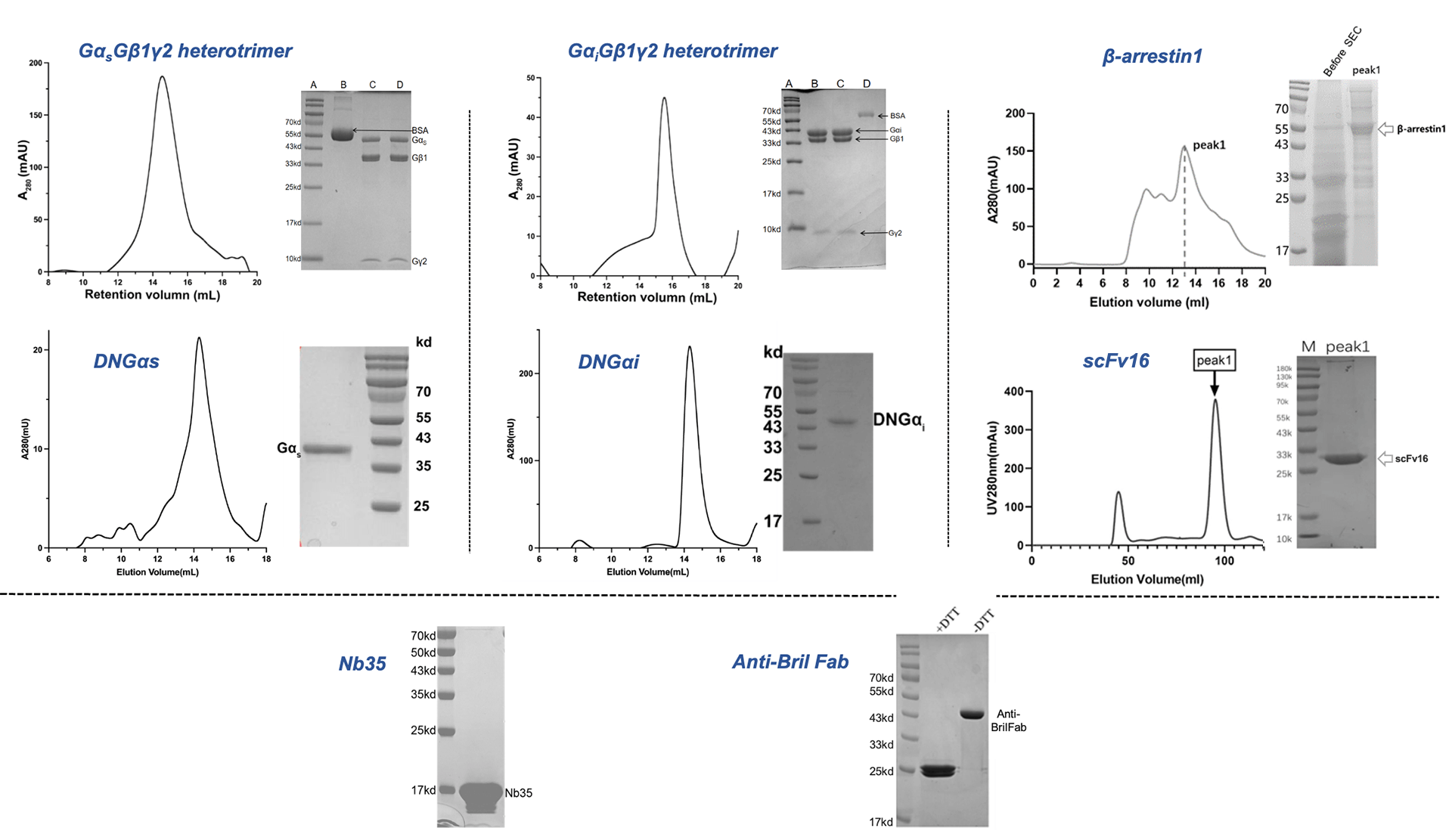Case
Case1: Preparation, structure elucidation and activity verification of CCR8
Obtaining conformationally homogenous forms of Wild-type CCR8 or engineered CCR8 (with fusion partners other than the M protein) has been difficult. In contrast, MegaR allows us to produce ligand-free CCR8 while maintaining its proper conformation. An ELISA test demonstrates that a therapeutic antibody interacts effectively with the extracellular region of MegaR-CCR8. Additionally, we’ve resolved the cryo-EM structure of MegaR-CCR8 in both ligand-free and antagonist-bound states. These achievements highlight the power of MegaR technology.
Wild-type CCR8 or fused with other partners
MegaR-engineered
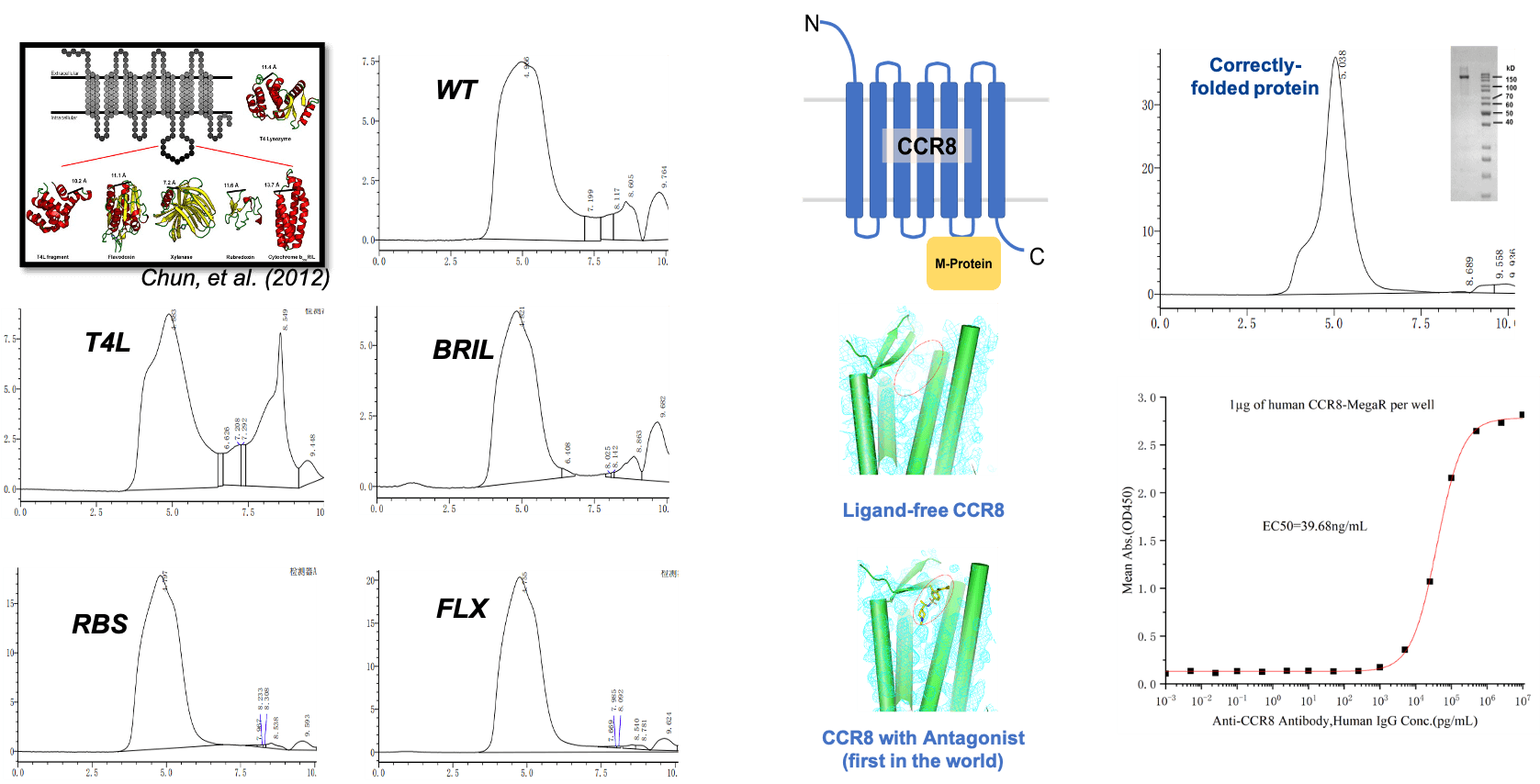
Case 2: Validation of MegaR-Engineered GPR75 by SPR and MST-TRIC (Family A)
Ligands: CCL5 & Unknow Compound
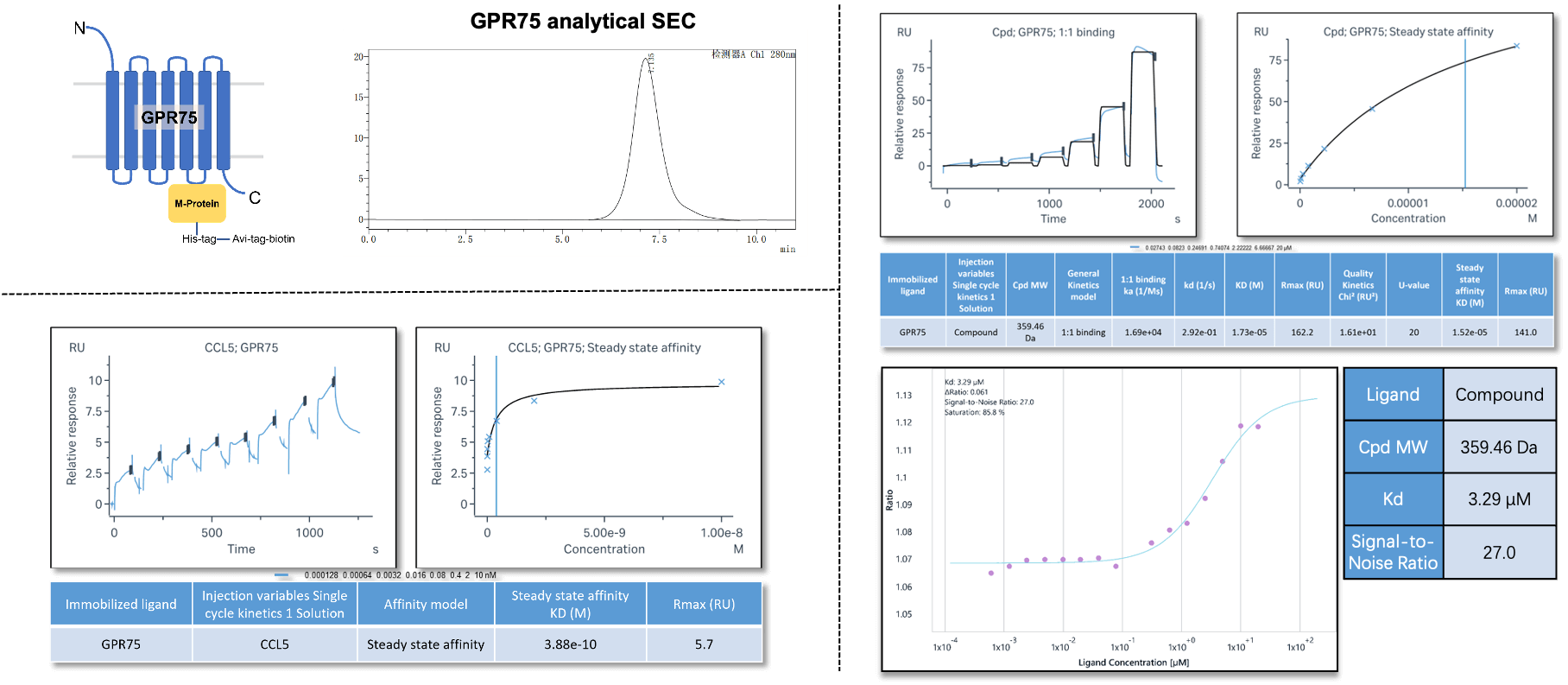
Partner with ICE Biosciesnce
Case 3: Validation of MegaR-Engineered VIP2R by SPR & FP (Family B1 )
Ligands: VIP (125-152) & PACAP(6-38)
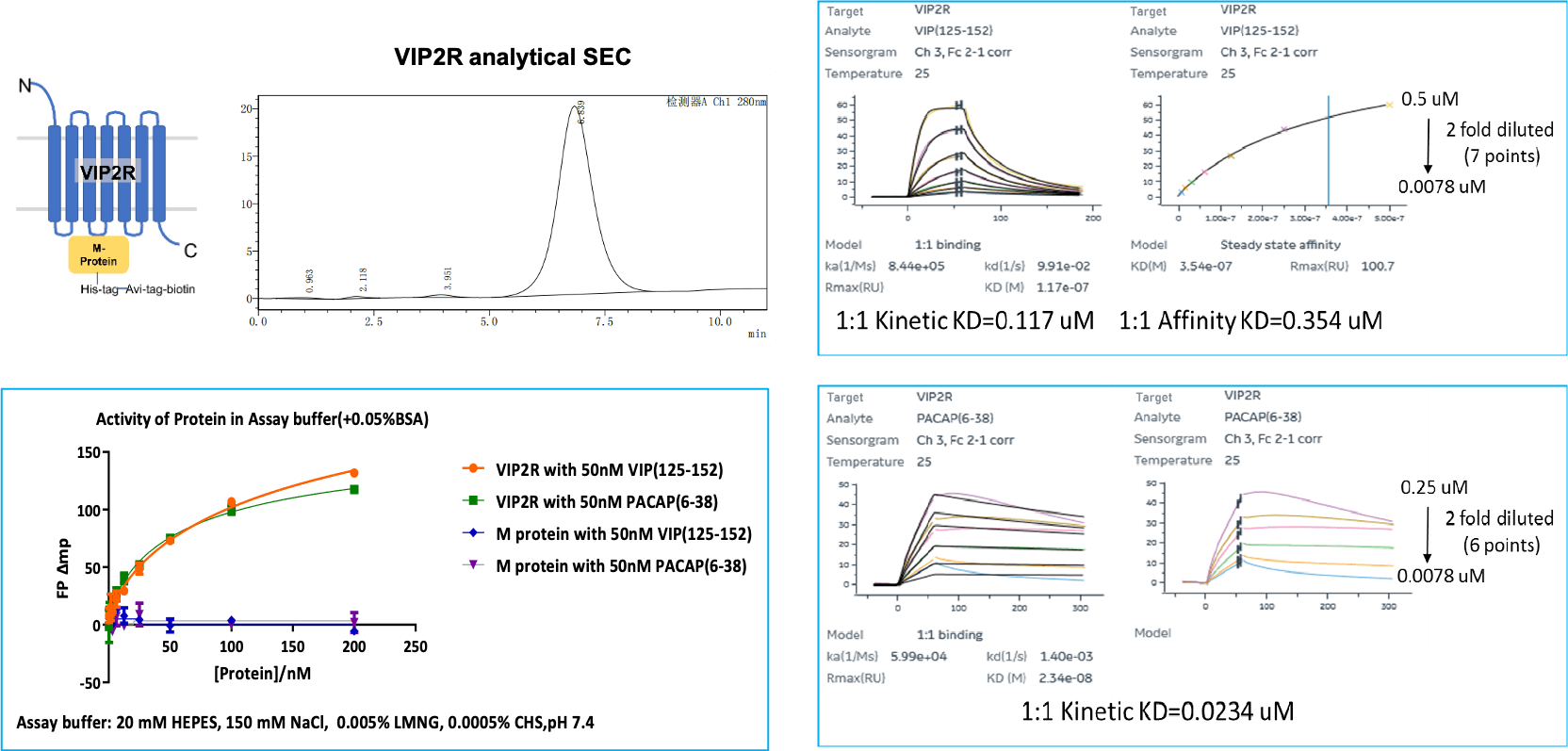
Case 4: Validation of MegaR-Engineered APJR by SPR (Family A)
Ligand: Azelaprag
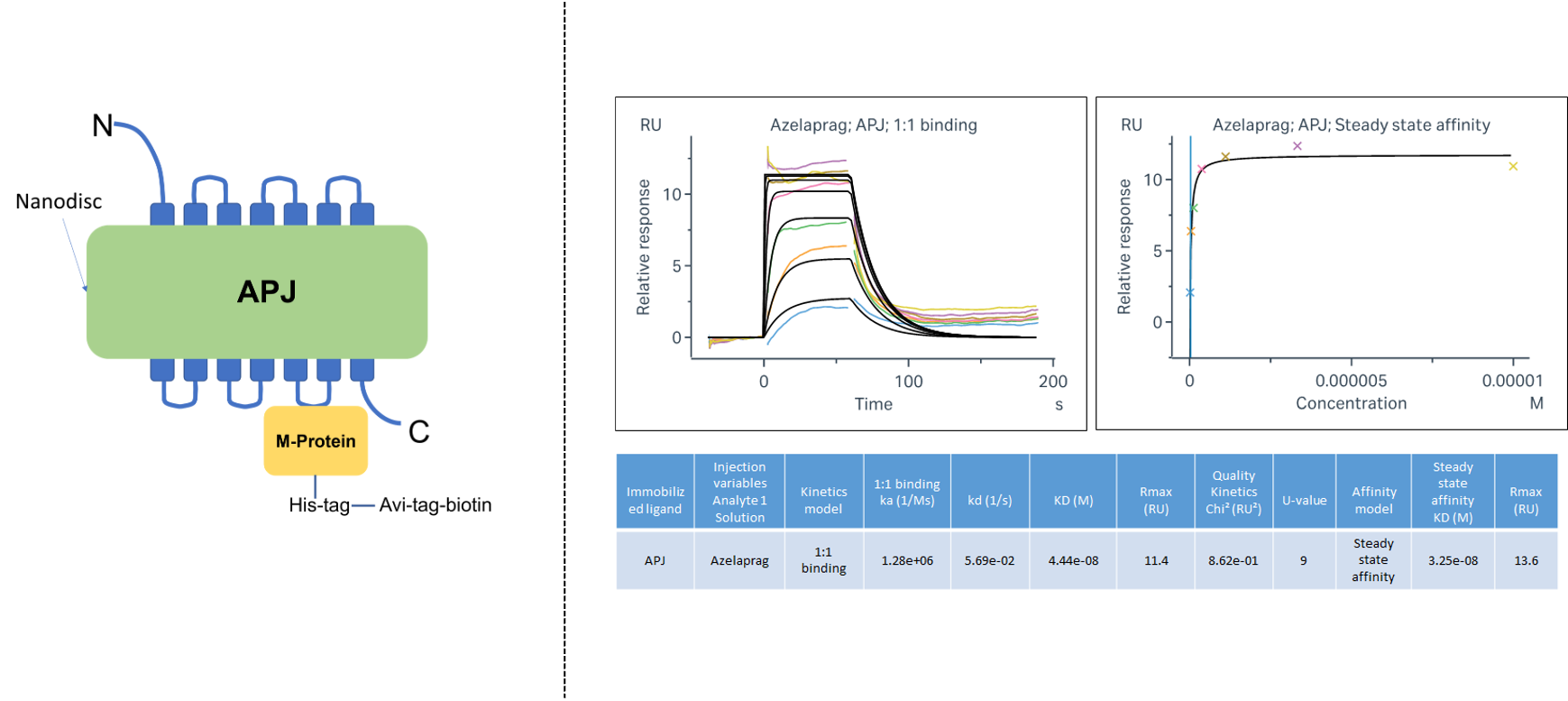
Case 5: AlpHelix Excels in Making GPCR-Related Proteins
